Burning wood to keep warm is an age-old tradition in many parts of the world. In Nordic countries especially, the topic leaves no one indifferent, whether it’s owners and users of wood burning stoves or fireplace inserts, or opponents who are worried about the significant emissions caused by wood burning when it’s either done wrong or with outdated equipment. But even the most modern wood burning technology will run into trouble if the combustible material is of bad quality, for example if the logs are too humid or if the user burns things the stove was never intended to burn.
There are many good wood burning tips available, including in the user manual that comes with your new, clean-burning stove or insert.
New wood burning stoves, that is to say the ones that have been on the market from 1998 onwards, are called clean-burning because they operate with a superior combustion principle, based on supplying air at two different stages – as opposed to old-fashioned stoves, which provide air at only one stage. This two-step air supply makes it possible to separate the combustion into two stages: the vaporization and partial combustion of volatile compounds with the first air intake; and the combustion of the remaining volatile compounds with the second air intake. This second air supply comes into the combustion chamber at high speed, at the exact spot where it’s needed, and is also pre-heated. This ensures an optimal mix of air and volatile compounds, as well as a high combustion temperature. In this way, everything is in place for a rapid and efficient combustion, and the ensuing reduced emissions of volatile compounds – both gas and particles.
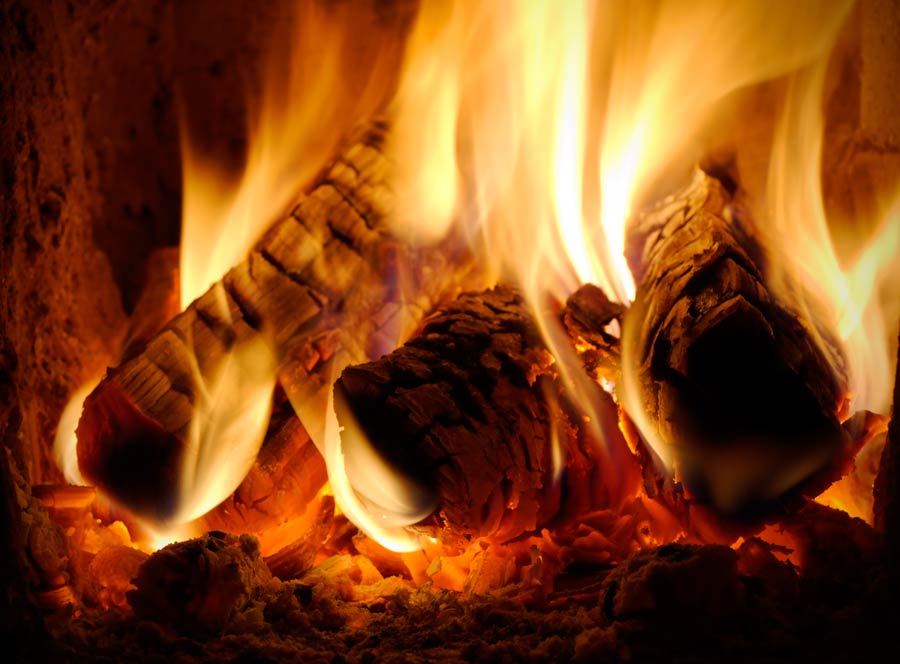
That being said, the operator (you) still has a large impact on the combustion process in a wood stove. The building the stove is located in will also have an impact. Wood burning stoves in Norway, for example, generally operate with a passive air supply: that is to say that the air is not pushed into the combustion chamber by a fan, but rather sucked in by the draft generated in the chimney by a temperature difference that in turns creates a density difference. In addition to this, very few stoves in Norway are equipped with automatic air supply controllers, which means that regulating the air supply is up to the operator (you). Anyone can heat a house with wood, but it’s a greater challenge to heat a house with wood in a way that minimises the impact on nature, climate and health, and maximises the heat output.
This means that a large responsibility lies on the shoulders of the owner and operator, who are usually the same person. In these times of high energy prices in most of Europe, we decided to provide you with detailed advice on how to achieve the best results, including explanations for why the advice is actually good advice.
You can reduce emissions from your wood burning and get more heat out of every log by respecting the following 10 commandments.
1. You shall not be content with outdated technology: Switch your old wood burning stove or fireplace insert (bought before 1998) with one-stage air supply for one that is clean-burning. Even with the most careful operator and the best combustible material, the emissions from an old stove or insert will be too high, because the combustion principle it follows is outdated. If you have an open fireplace used for anything else than ambiance a couple of times a year, get a fireplace insert installed. Open fireplaces contribute only minimally to heating the house (sometimes they actually cause a net loss) and have high emissions. Antique wood stoves (from before 1940) are often beautiful to look at and worth preserving, but they are best left as a beautiful object to have on display but not use.
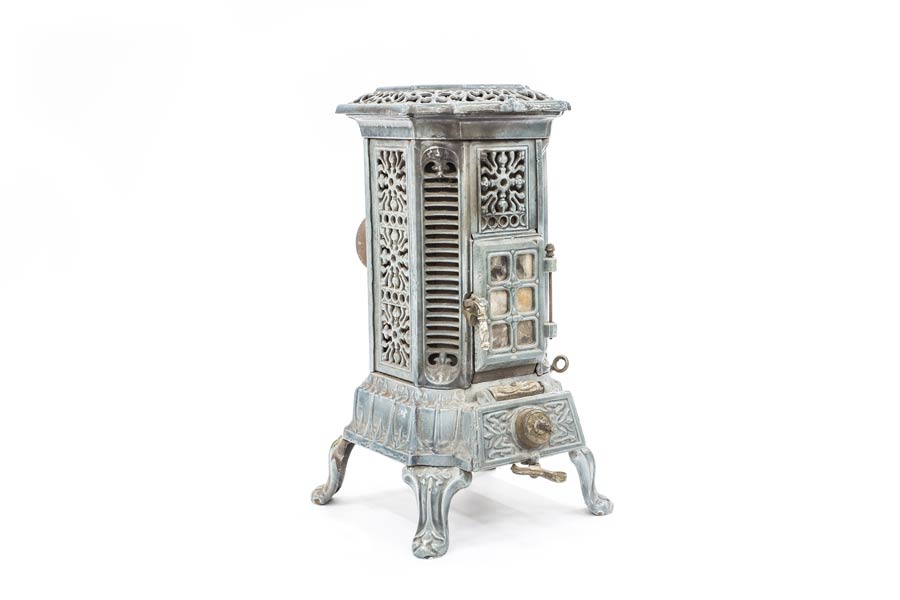
2. You shall take into account the amount of heat needed, the type of residence and the chimney: When you switch to a new stove, make sure it is suitable to your heating needs (measured in kW) and to your residence, including the chimney. The characteristics of the chimney (height, cross section, insulation, airtightness) are all important because they determine how much draft will be generated to provide your stove with the air it needs. When you light up a fire in your stove, the draft gets created by the chimney, and the difference in temperature and hence density between the room air and the outside air – as you probably know, hot air rises. As the temperature of the exhaust smoke increases, draft will improve because of the increased temperature difference between the smoke and the outside air. To regulate the draft further, you can adjust the aperture of the stove’s air vent (there can be more than one, to regulate the supplies of primary air and secondary air separately). The operator’s adjustment of this air vent is therefore very important, especially immediately after lighting up, and in the period that follows. An open fireplace has no air vent, and eventually sucks far mor air than needed, which drastically reduces energy efficiency and causes high emissions.
3. You shall not use other combustibles than firewood: Wood burning stoves are built and optimised to burn firewood. Other types of combustibles can create significant challenges with respect to controlling the combustion process, which can result at best in higher emissions, and at worst in a chimney fire. Different types of firewood have different properties. Hardwood, like birch, have a higher density than softer (more porous) varieties like spruce. The energy density of hard firewood is correspondingly higher. It follows that the volume of wood used has to be reduced. Bark has a different composition than the wood it protects, and gives higher emissions of certain compounds. Try to avoid inserting many thin logs with lots of bark at the same time in the stove. Paraffin firelighter logs should also be avoided in wood burning stoves, since the paraffin they contain can melt and flow down into the air regulating mechanism. Paraffin is also a fossil fuel, which means burning it contributes to global warming. Compressed combustibles like wood briquettes are not logs. They have completely different physical properties compared to actual firewood logs, and wood burning stoves are not intended or indeed type-approved for such fuels. Of course, wood briquettes and many other types of materials will burn if you place them in the stove, but because of their different composition and physical properties, they can contribute to extreme emissions or dangerously high temperatures. And don’t burn rubbish in the wood stove.
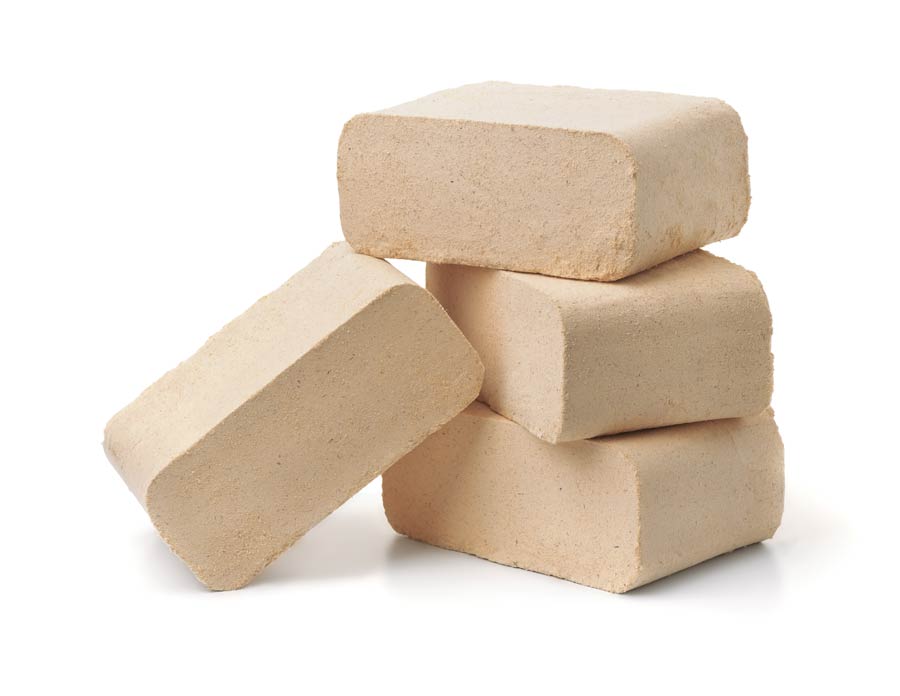
Everything you need to know about wood logs and wood briquettes
4. You shall light up in an efficient and environmentally friendly way: When lighting up, pile the logs horizontally, preferably in two layers and in such a way that they are not touching the oven walls or the glass pane. Also make sure that the air intake is not obstructed. The largest logs should go at the bottom, and the smaller ones on top. At the very top, you can pile some wood chips or birch bark for lighting up. Alternatively, you can use fire starters. Avoid newspapers. When everything is ready, light up the fire from the top. This prevents the entire log pile to catch fire at the same time. Instead, only the top part will burn at first, which will quickly give a small flame with a sufficiently high local temperature to ensure an optimal start to the combustion process. The flames will slowly spread downwards and activate the bottom layer of logs. If you activate the whole log pile at the same time by lighting up at the bottom, it will take significantly longer to reach the temperatures required to achieve a clean combustion, and the emissions will be higher.
5. You shall adjust the air supply when you light up: Adjusting the air supply when lighting up is important because the stove is cold at first, and the draft is limited. When you light up, let the stove door be open just slightly, until a good flame has taken hold at the top of your log pile. Make sure the cooking hood and bathroom fan are turned off. When you close the stove’s door, control of the air supply is delegated to the air vents, which should be open at their maximum for a little while, to ensure a sufficient air supply. After a few minutes, the draft in the chimney is strong enough, and you can regulate the air supply by reducing the air vent’s aperture. At this point, you want to provide less primary air and more secondary air. If you neglect to regulate your air supply, you will end up burning more wood than necessary and increase the temperature inside your chimney. A high temperature inside the chimney means more lost heat (you are essentially “warming the outdoors”), which is uneconomic. In the worst case, it can even result in a chimney fire, if the temperature reaches very high levels and there has been a lot of residue build-up in the chimney.
6. You shall not close the air supply completely: Adjusting the air supply after the stove is hot is not necessary, as long as you regularly add small amounts of wood to keep the combustion going. The wood stove will achieve a thermal balance with its surroundings, and as long as its heating effect (measured in kW) is sufficient for your home, you should not have to touch the air vents. If it becomes too hot in the room, add less wood at a time, and increase the amount of time between each insertion of wood. A log placed on glowing embers will light up easily. Closing the air supply completely is a bad idea. Without a proper air supply, the emissions of volatile compounds skyrockets. Inserting large amounts of wood and closing the air supply in the hope of having a long-lasting burn is therefore not recommended.
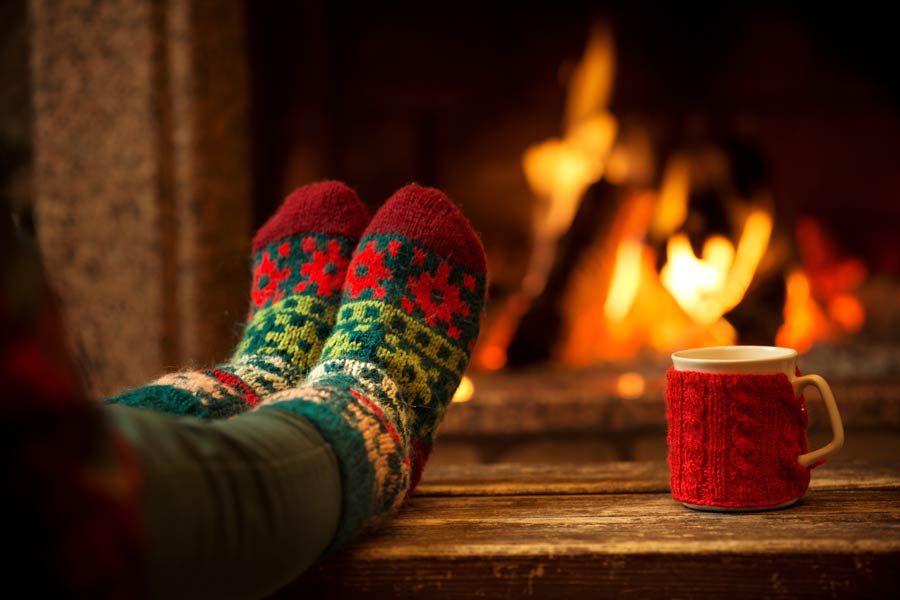
7. You shall adjust the amount of wood used when the stove is hot: Add one log at a time, horizontally. Place it on the glowing embers, preferably right in the middle, so that it touches neither the walls of the stove nor the glass pane. The interval between each wood insertion depends on the size of the log and the amount of heat you wish to generate. Here, you can go by trial and error, since heat requirements vary from person to person, and also depend on the building and the outside temperature. When you open the stove door, avoid doing it too quickly, since this creates a vortex that sucks smoke and unburnt volatile compounds into the room. Avoid messing around with the fire too much, since this takes time and releases particles that can end up in the room. Be efficient when you add a log so that the door is open for the shortest amount of time possible when the stove is hot.
8. You shall allow the wood burning to end properly: Let the air vent be open until all the fuel is completely burnt. If there are bits of charcoal left, you can keep these for the next fire. But do remove the ashes. When the stove is not in operation, close the air vents to avoid heat loss through the chimney.
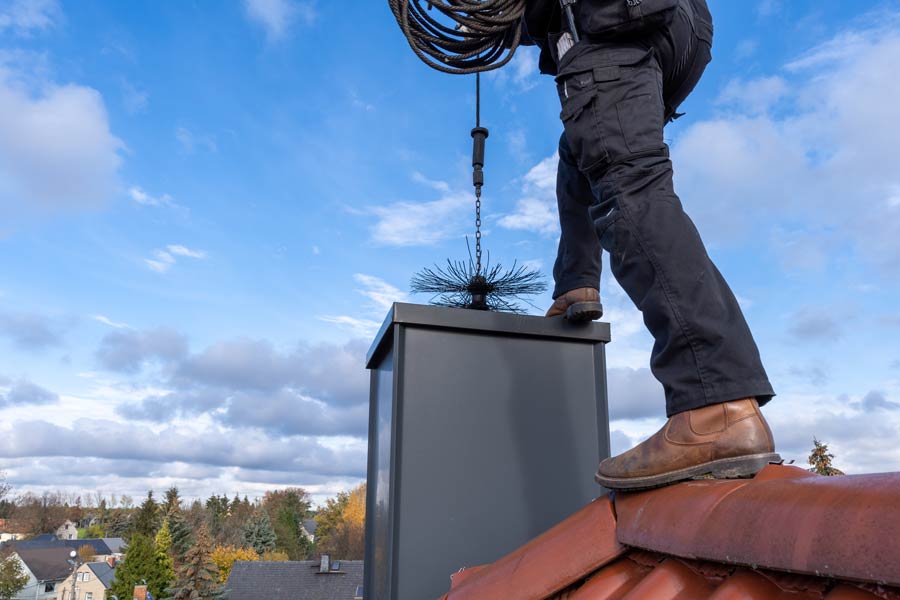
9. You shall ensure proper maintenance: All wood burning stoves need a little maintenance to function optimally. Remove the ashes between every fire. Check the gaskets regularly; air leaks can significantly impair the combustion process, by adding air (and too much of it) in the wrong places. The chimney should be swept regularly to prevent chimney fires. The interval at which this should be done depends on how often the stove or fireplace insert is used. It also depends on the technology and the way the stove or insert is operated. The surfaces inside the stove or insert and the stove pipe should be cleaned once in a while. Bad combustion can cause residue to build up over time, which both reduces the heat transfer to the room and increases the risk of chimney fire. Significant residue build-up can also increase flow resistance, which will result in poorer draft.
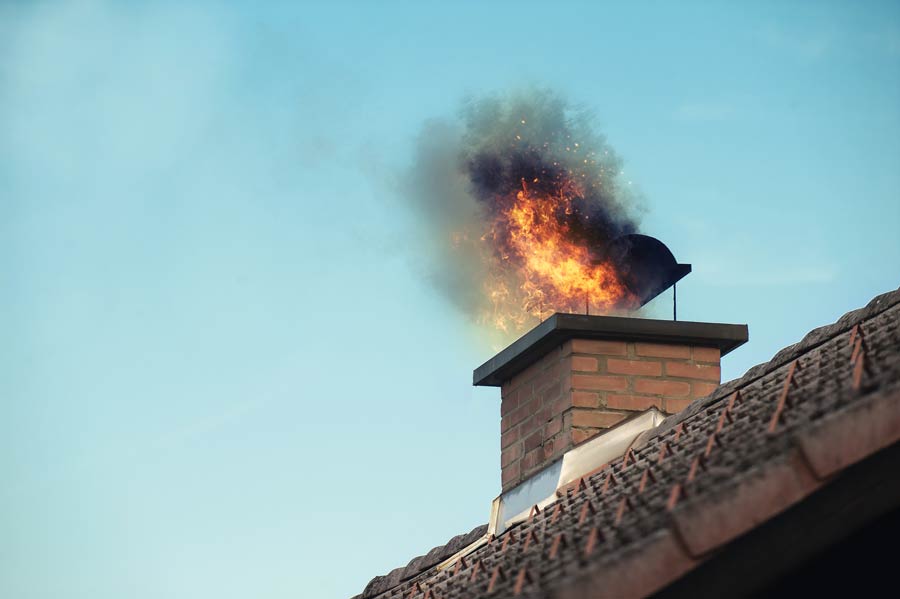
10. You shall not heat the outdoors: Evaporation of water in insufficiently dried wood, heating of excess air, higher temperature than necessary in the chimney, emissions of unburnt volatile compounds and too much charcoal in the ashes: all these factors can contribute to reducing the efficiency of your stove or insert, which means heating ends up costing you more. Firewood should be dry when used. That is to say that it should not contain more than 20% water. Do not dry fresh logs indoors (that can be detrimental to your health) but logs that are already dry can be placed near the hot stove before use, to remove a bit more moisture from them. Having the air vents open more than necessary means you’ll need to heat up more cold air than is strictly necessary for the combustion process. This increases the amount of smoke and results in more heat being released outside, via the chimney. If you add lots of wood, especially when the stove is already heated up, the temperature in the chimney will rise and lots of heat will go to waste. High emissions of unburnt volatile compounds mean also a correspondingly high level of wasted energy – the same goes for having lots of unburnt charcoal in the ashes. Bad combustion over an extended period of time causes residue to build up on the heat exchanging surfaces of the stove and in the stove pipe. This build-up reduces the heat transfer to the room and increases the temperature in the chimney. Again, more wasted heat.
As you can see from reading these commandments, there are quite a few factors to take into account when lighting up your wood burning stove or fireplace insert. The key is to be aware of the consequences of doing things the wrong way. Everyone wants lower emissions and the largest amount of heating per log. So, give your contribution to a better environment and climate, and to healthier air quality and get more bang for your firewood buck by the same token. All you need to do is follow these rules. And remember: by heating with wood on cold days, you contribute to reducing electricity consumption when it’s at its very highest, which provides much-needed relief to the electricity grid, and contributes to lower electricity prices – also for you.
Updated 13. November 2023.
First published 16. December 2021.

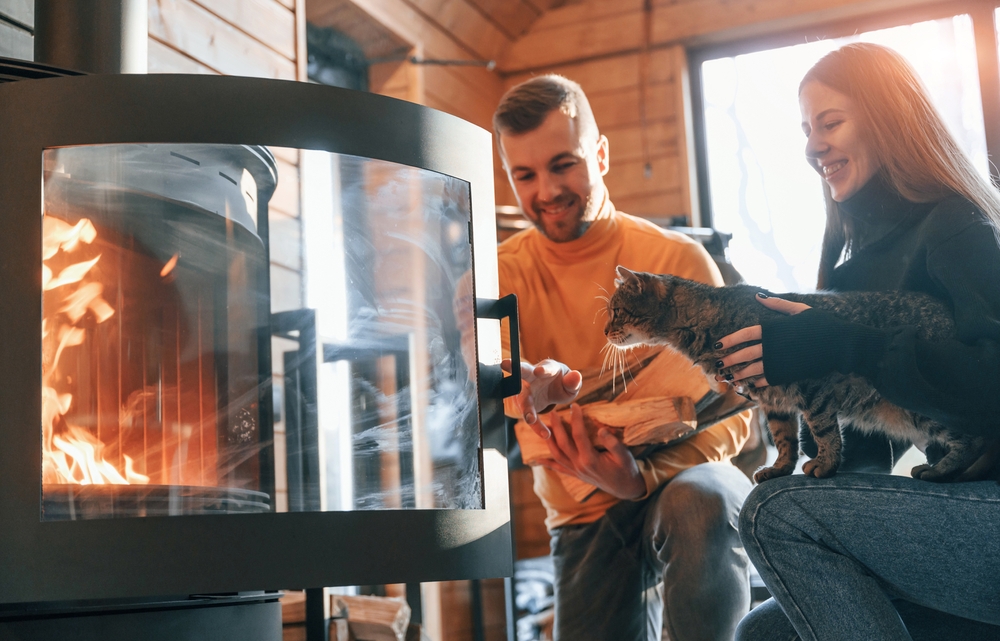
Pingback: Don't Look Up: Can effective science communication save the world? - #SINTEFblog
Pingback: Pellet vs Wood Stove: Which Is Right for Your Home?
Bra innlegg. Har du noko erfaring med korleis ein ny finsk masseomn er i høve til enklare moderne omnar?
Finske masseovner er store og tunge (typisk over 2 tonn) og brukes på en helt annen måte enn vedovner, og er ikke egnet for norske trebjelkelag. De har sine fordeler med tanke på å kunne fyre hardt, lagre mye varme i ovnsmaterialet og avgi varme i mange timer etterpå. Hvor god forbrenningen er avhenger også der av forbrenningsprinsippet og lufttilførselen, brenselet, og operatøren.
Takkar
we have followed these rules since out chimney sweep told/shown exactly these rules about six years ago and still do today. it works without fail. brilliant. logs only.
Good to hear!
Pretty good if slightly fancified set of rules I would say. Wood burner for 40 years, I am always willing to learn more and use my stove efficiently.
A simple rule not highlighted is if your chimney is smoking (other than at start up) then something is wrong.
Bottom line is DRY wood (I manage around 11percent. It varies even with the weather)
You’ll learn to love you’re stove if you feed it right!!
Sure, dry fuel (less than 20% moisture) is important. Smoking chimney can be due to several reasons or combinations of them, e.g. wet fuel, poor combustion conditions, too low chimney draft. Yes, also the chimney (the engine in the stove-chimney system) is important.
Wood burners maybe nicecand warm inside but the smell from them outside stink and takes my breath away anyone with chest trouble like Asthma its awful they pollute thecair and should be banned i cant even open my windows because from next doot to me u can smell the fumes and it comes into my house
The smell comes from poor performing stoves. There might be several reasons for the poor performance, e.g. old and outdated stove technology, poor fuel quality, incorrect stove operation, too low chimney draft. Hence, much can be done by your neighbours to minimise the levels of health impacting emissions.
Log burners are good .as price of electric and gas prices going up by the day.they save loads of money.if you burn dry wood they are fine
Sorry Tony,
Log burners are far more expensive to run than say gas fired central heating.
The price of dry logs in the UK has gone up accordingly.!
They’re a bit of a luxury feature really.
Sorry but can’t agree with that. Three cubic metres of kiln dried logs get us through the winter (November to March) and cost around £300.
Gas central heating on for one month £295. This reduces to £65 when woodburner is used instead. Makes sense to me.
That is very cheap, when I purchase from a well known supplier it’s approx. £300 for 1m x 1m x 1.6m.
Please indicate your source if Nationwide delivery.
Sorry Derek.
No they aren’t, not when you get free logs it’s infinity cheaper!
The time has now arrived…..no choice…..!!! Be prepared!!!
We live in a 5 house enclave 3 of the 5 have wood burners and I totally agree with a previous poster. We can smell and taste the fumes that come from them. Outside and inside the house. Windows and doors have to be shut. Pets smell of smoke as well…..I thought they were being banned due to pollution/ CO2…
As mentioned in a reply to another comment, the smell comes from poor performing stoves. Much can be dome by your neighbours to abate this.
Removing all the ashes after every fire is totally wrong, wood burns best on a bed of ashes
The bulk of the ashes should be removed before each cold start, especially the fine fraction of the ashes. The coarse fraction mixed with high energy content charcoal can be left for the next firing cycle, for the benefit of combustion chamber performance and energy efficiency.
How does the vacuum cleaner differentiate between one set of ashes and another?
I’ve just had two brand new log burners put in and I’m sadly not impressed. One of them works ok but it takes ages to heat up the room. The other just doesn’t work at all. I’m using the correct fuel but still the glass is foggy. It worked once or twice but most of the time it provides little heat and burns badly. I’ve just wasted the best part of £6000 on a system that frankly doesn’t heat my house or individual rooms well enough.
I’ll ask the guy who installed them to take a look at what’s going wrong. It could be the chimney but I fear that the stove itself just isn’t warm enough and that nothing can be done.
I have had a wood burner for over 20 years and this article is by far the best I have ever read! Congratulations well done. Regards David A Rigby
Excellent clear article – thank you!
You didn’t mention have a good thermometer for both stove and flue region the optimum burning temperature is a must. Something that can not always easily be judged by just looking.
No, but you are right, a stovepipe thermometer is useful for monitoring the flue gas temperature into the chimney. The type of thermometer depends on the stovepipe. For the stove itself a temperature measured by a surface based thermometer will be harder to relate to the temperature inside the combustion chamber.
If you don’t have one already I highly recommend a good quality Peltier stovetop fan as it makes a big difference to the home, rather than a relatively small area around the stove.
I am 80 yr old now, i have never known any other heating as i lived in the country, we went from the start ,cutting the trees down , then it was stored for about 2 yrs in an open lean to shed, we had a big open stove there was a boiler one side and a oven the other side, which mother done all the cooking ,there was also bars on top of the fire for frying pans and other cooking , fire was lit when ever these were needed , 7 days in winter, and about 2 or 3 days in summer, heating water for bathing etc, water had to be carried from a well about 500 yards from the house, i remember the first time we had electric was when i was 15 yr old, and thought it was magic, no candles or oil lamps to fill, still sitting by log fire and still enjoying , dont let anyone tell you there is a better way, our fire got back boiler heating the whole house with 7 radiators,hope you enjoyed reading this from an old git, it also keeps you fit lot of work , Regards Eddie
Totally agree with the above,do not remove ashes after each firing,build thr new fire on top of thr cold ashes it davrs fuel! And givrs faster room temp recovery,just scoop oit maybr a third every once in a wjile when it has nuily up too much
I have a outdoor wood boiler, and it is wonderful, most of the time. I just keep wood in it and it all works automatically. I have a programable t-stat in the house that keeps the house temp consistant, no matter what the weather is outside. My ashes come out through the auger on the bottom and my wife likes the no smoke or dirt in the house.
Thank you for stating that you will consider the type of residence, the chimney, and the amount of heat required. My mother wishes to replace our home’s fireplace. Before going to a fireplace store to get one, I’ll advise my mother to think about how much heat she needs.
Pingback: Don’t burn your Christmas tree in your wood-burning stove!
Pingback: How to look after your wood-burning stove - #SINTEFblog
Pingback: How to choose the right wood-burning stove for your home - #SINTEFblog
Thank you for the article. I hope you can help me answer a question about sizing. We are shopping for a small wood burning stove for the kitchen / sitting area of our almost-finished home. We might attach a copper coil heat exchanger for hydronic heat to an adjacent room. We are remote and 100% off grid. The stove I’m considering is designed for a space of about 900 square feet but our kitchen / sitting area is only about 300 square feet. Is the excess capacity of the stove likely to be a problem? I can build fires that are relatively small for the stove so we don’t overheat, but are there other considerations? Thank you so much for any insights you can offer.
The other main consideration is emissions, where small fires in a large stove will result in high emissions and also an energy loss due to this. Choose a smaller stove that can be operated more continuously with good combustion conditions and with low risk of overheating.
Fun framing of the commandments 🙂 Great content. I’m considering an airtight-heated addition to our house. We did heat a previous home for 12 years in Minnesota with an airtight, that was 30 years ago, so excited to see what new technology and knowledge is out there! Just FYI, “Paraffin is also a fossil fuel, which means burning it contributes to global warming” applies to burning wood as well. Both emit CO2, both contribute. Leaving fossil fuels in the earth, and leaving wood to naturally decompose, will best reduce these contributions to manmade climate change.
Of course, all combustion of carbon containing fuels results in CO2 emissions, but CO2 emitted from combustion of biomass is part of a natural and short term carbon cycle, compared to fossil resources that has been in the ground for millions of years. As long as we have material and energy needs that cannot be covered by renewable resources alone, we still need to rely on fossil fuels, but the goal is of course to strongly reduce the dependence on fossil fuels. When it comes to natural decomposition of the wood in the forest, this decomposition also leads to greenhouse gas emissions, and not only CO2. Using the forest as a carbon storage has its limits, where you come to a point where an equilibrium is reached. The forest is a necessary source of materials, and it is mostly residues that are used for energy purposes, and they provide needed energy. A well maintained forest will have a larger carbon storage potential than if the forest is left unattended. There are many facets to consider when it comes to use of our carbon resources, and the key is to use all our carbon resources in an optimum way, and together with other renewable energy sources, so that we can cover all our material and energy needs while combating global warming at the same time.
As I understand it wood emits the same amount of CO2 when burnt as when it is allowed to decay. The C02 is absorbed by growing trees, shrubs etc releasing the oxygen. Burning wood for heating saves burning fossil fuels which emit CO2. Result
burn wood and help to save the planet.The ultimate fue l is of course is hydrogen —H2O (hydrogen 2 oxygen ) where burning emits water and oxygen only. Water is free and inexhaustbule . Cosiderable work is being done to produce it economically.
Using ‘free’ wind power to split H2O to produce electricity ( also useful for heating ) which can then split water ( plus a catalyst ) into oxygen and hydrogen which can then be used in carts, homes, industrially etc.
Needless to say I heat with wood.
Decaying wood results in release of carbon in different forms, while a good combustion process results in primarily CO2 emissions, from a renewable resource. Effective substitution of fossils fuels with sustainable biomass is indeed contributing to saving the planet. As you mention, hydrogen is another promising contributor. All sustainable contributions are needed to reach our climate goals, and we need to speed up our efforts to get there. All small contributions from individuals results in a big contribution overall. So, continue heating with wood, and do get the most out of the energy content in the wood, to increase the fossil fuels substitution effect.
Just read this article and I can say these are awesome great tips on how to take care of your Wood Stoves in Claremore, OK. I will be using this tips for my own clients so that there Wood Stoves in Claremore, OK go smoothly!
Thank you , I have ben running a new wood burner insert type for two years and learned a lot from this article , very good guidance in the 10 commandments and comments. Many Thanks
All well and good. However, if 8 billion people were all using wood heat all our forests would be gone in one generation. I agree that biomass is a reasonable alternative to fossil fuels but it’s not even close to providing the energy humans need/want. Solutions are difficult. Yes there is photovoltaic, wind, wave, nuclear, hydro but these presently comprise of well less than half of energy used. Conservation, insulation should be primary goals. And god willing our physicists will be able to harness fusion. This also comes with its own issues as heating the planet regardless of source is still heating the planet. It’s going to be an interesting future.
A multitude of renewable and sustainable energy sources are needed to cover our energy needs for different purposes and displace the use of fossil fuels. Energy conservation is of course essential to reduce our energy needs. Sustainable heating with wood is just one part of the energy mix, where the procurement of the wood also needs to be sustainable. There are no single solutions to cover our future energy demands, we need to harness the different energy sources in an optimum and sustainable manner.
Wow! Very informative and impressive lines. Outdoor lighting installation enhances curb appeal and safety. Consider path lights for a welcoming entrance, spotlighting for architectural features, and string lights for a cozy ambiance.
Thank you for a very good article!
Hope you can clarify on these lines in 5#
“After a few minutes, the draft in the chimney is strong enough, and you can regulate the air supply by reducing the air vent’s aperture. At this point, you want to provide less primary air and more secondary air. If you neglect to regulate your air supply, you will end up burning more wood than necessary and increase the temperature inside your chimney.”
How do I now what air vent aperture is optimal? How would you define optimal? One optimal could for example be the aperture setting giving the cleanest air. For example highest fraction of CO2 and H20 compared to other gases and particles? Another optimal could be to leave as much of the energy stored in each log as heat in the house? Even a third optimal could be to reduce the heat produced by the oven (maybe at the expense of the first two optimas?)
Maybe you could elaborate a bit more technically on what we want to achieve with regulating the air aperture and how do we now that we have got the setting right?
A good question!
What’s optimal is to establish a good fire based on the principle of igniting from the top. Thereafter the air supply can be adjusted to achieve the heat generation that you want, but it must not be reduced to the extent that poor combustion results. New wood stoves usually have only one air vent, regulating the distribution between primary and secondary air at the same time as reducing the overall air supply. The best operation with respect to minimising emissions is to operate the stove at its nominal heat output, and the stove manual should contain good advice on how to operate your specific stove in an optimum manner. Both too low and too high heat output can be detrimental when it comes to emissions and energy efficiency. If there is a mismatch between the recommended heat output range of your specific stove and the heat you actually need, consider to exchange the stove with one matching your heat need. Also, wood stove technology is continuously improving, giving lower emissions and higher energy efficiency.
2 years ago we looked at ways to have an alternative heating option in our bungalow in case the gas supply would be interrupted during winter. Mindful of the stories of my parents who survived WWll in the Netherlands, it would make sense to have a small size multifuel stove, which would be easy to heat up with a small amount of fuel, to ensure that it could be used as well to heat a water kettle or a slow cooking pan of food. We settled for a 2-5kW stove, with primary, secondary and tertiary controllable air inlets. The tertiary inlet supplies air underneath the fuel grid, when solid fuels like briquettes and smokeless coal would be used. Using the rear flu exit to make sure that the combustion gases have a longer pathway to heat the stove, the T-piece in the rear exit is located in a relative large cavity, from which we direct the hot air into the room with a couple of stove fans. We try to squeeze out every bit of heat before the flu gas escapes to the outside… Further adaptations are a large copper stove surround and a copper plate on top of the stove to increased the heat conductivity to air, in addition to the standard heat radiation of the black cast iron body of the stove. When firing up the stove from cold it takes some 3 minutes before the stove fans start to work. Our little stove has now been able to heat our (well insulated) 2 bed bungalow since installation in May 2022 in East of England. Total use of fuel in that period, 2 large pallets of kiln dried wood, =approx 4.5 m3, and approx 1100kg of hardwood (oak shavings) briquettes,(rest products of a local sawmill). Our monthly gas bill is now down to an average of £8.-/month, only to heat our tap water. One aspect which is normally not mentioned, but what we have experienced as a positive side effect is the natural ventilation which a log burner provides. Roughly speaking, each kg of solid fuel, logs or briquettes, requires 8-10m3 of air for good combustion. Many modern houses are excessively draught-proofed, causing humidity build-up and mold-growth as people are adverse to ventilate their houses with an advisable 0.5 to 1 air change/hour for a residential building. Our log burner acts as our natural extraction ventilation system. We can happily dry our laundry indoors and have no problems with condensation at all.
Thanks for sharing the positive wood heating experience. Yes, the chimney contributes to ventilating the house, but it might contribute more than needed. Good that you have control of the air supply to the stove, but when the combustion has ended, an open air supply valve will also result in a significant heat loss through the chimney. From an energy efficiency point of view the best option is to take the combustion air directly from the outside, and have a separate ventilation system with heat recovery.